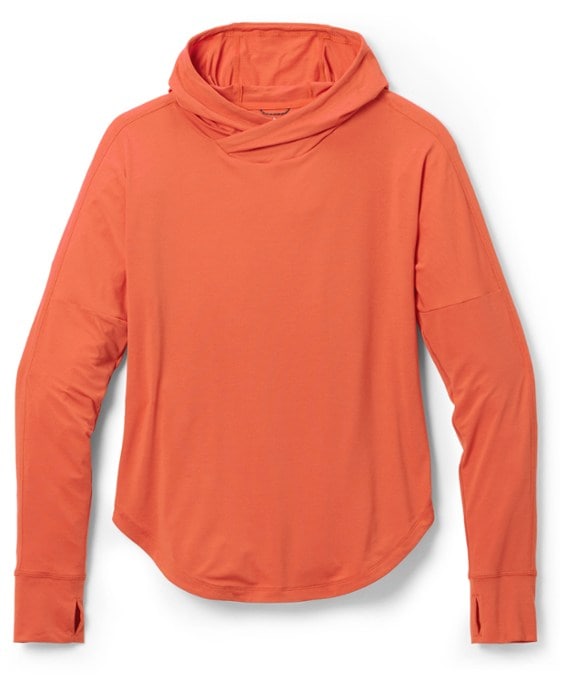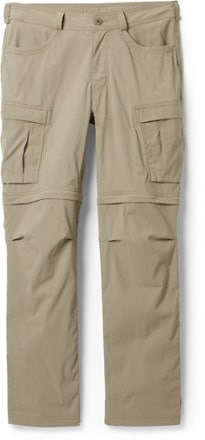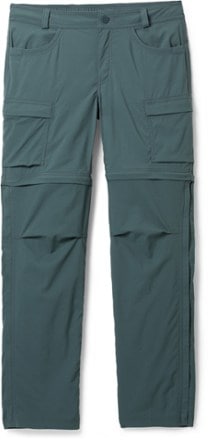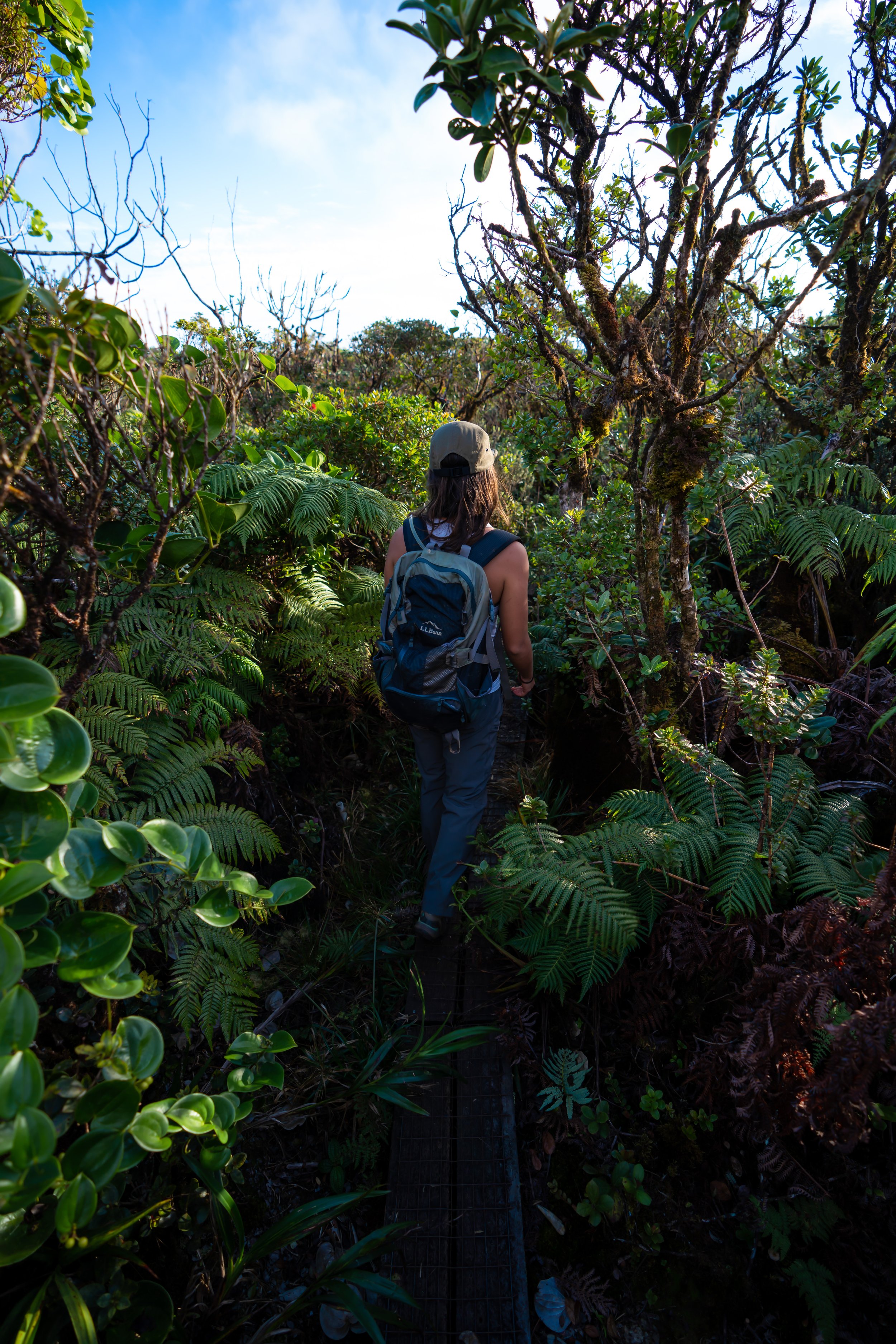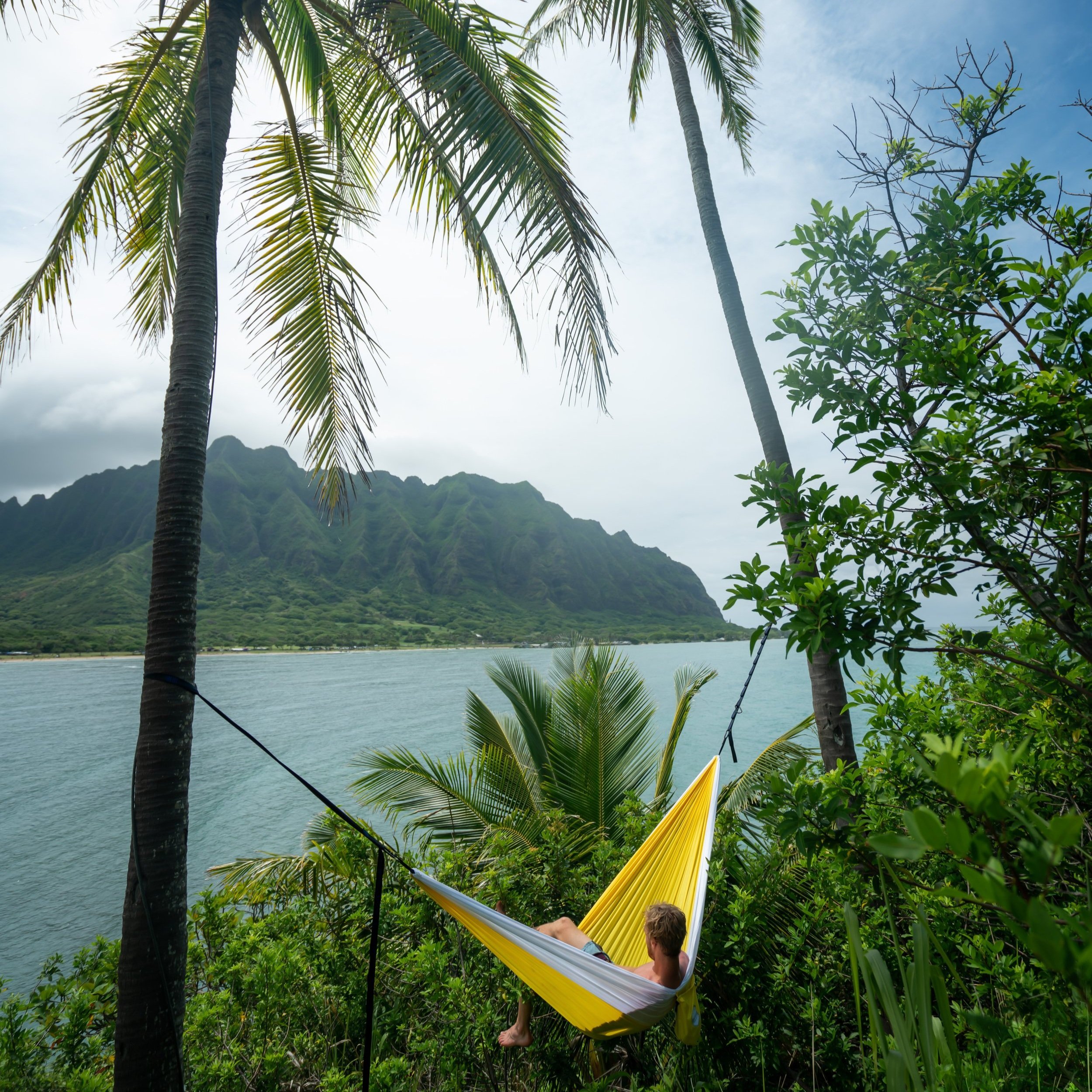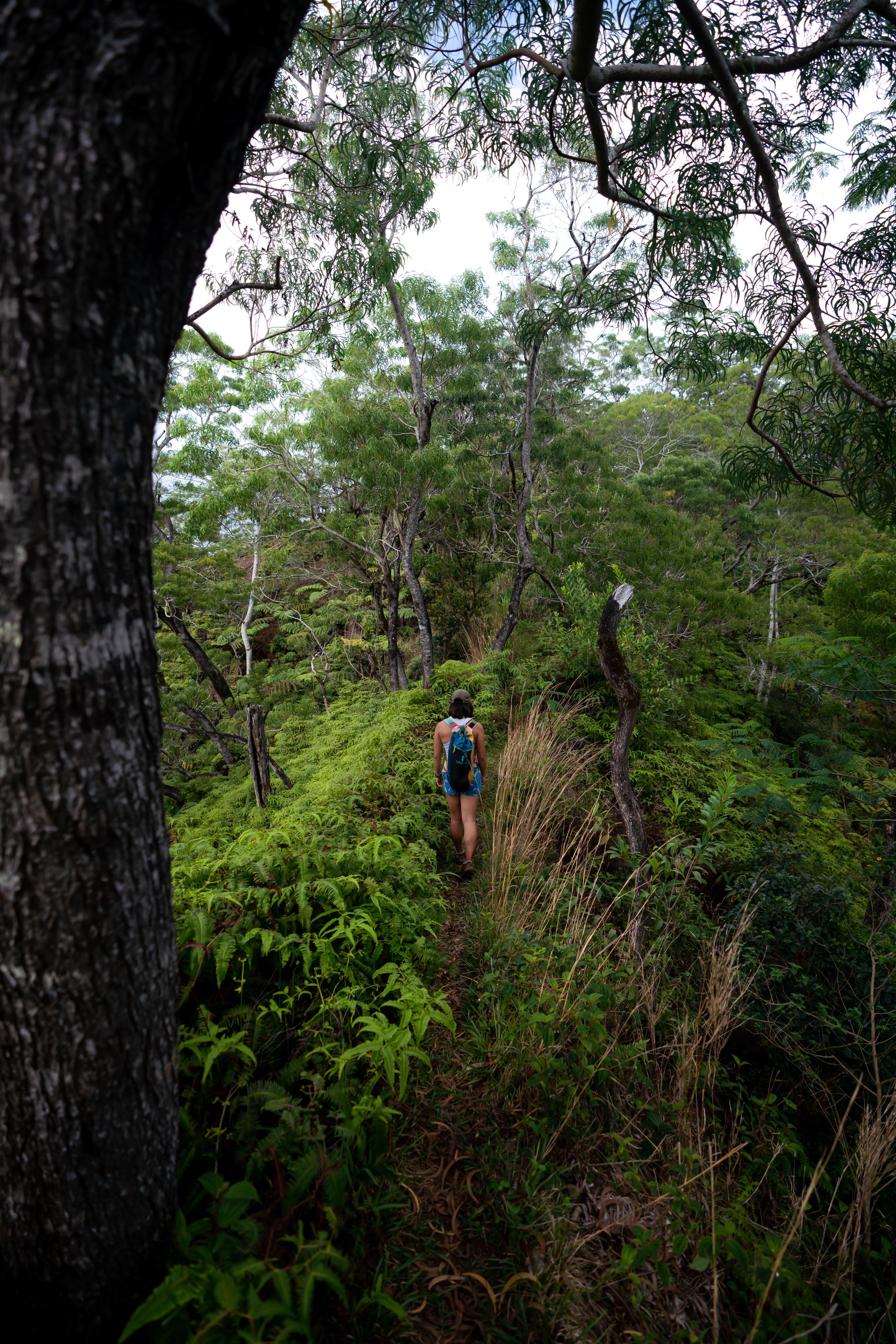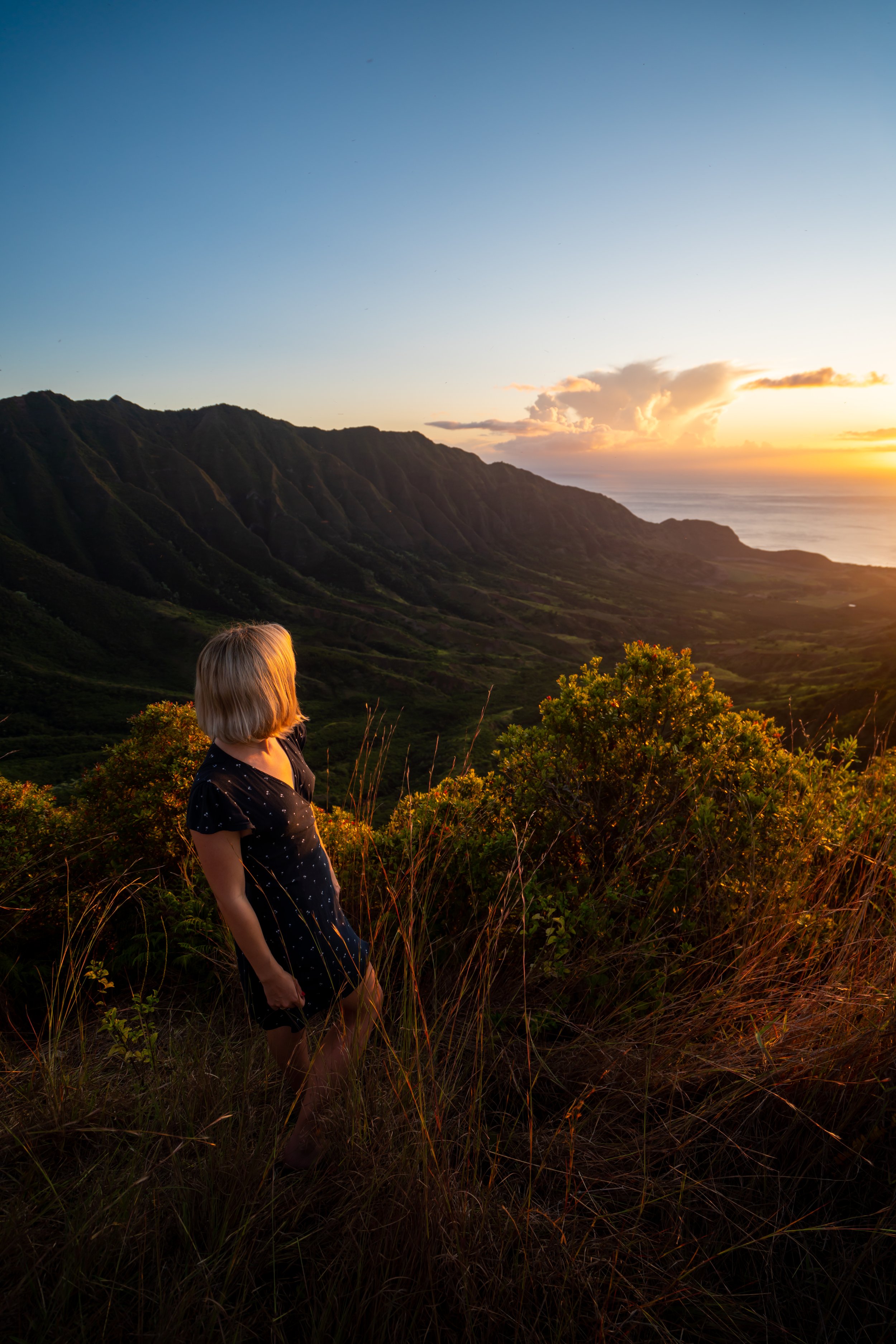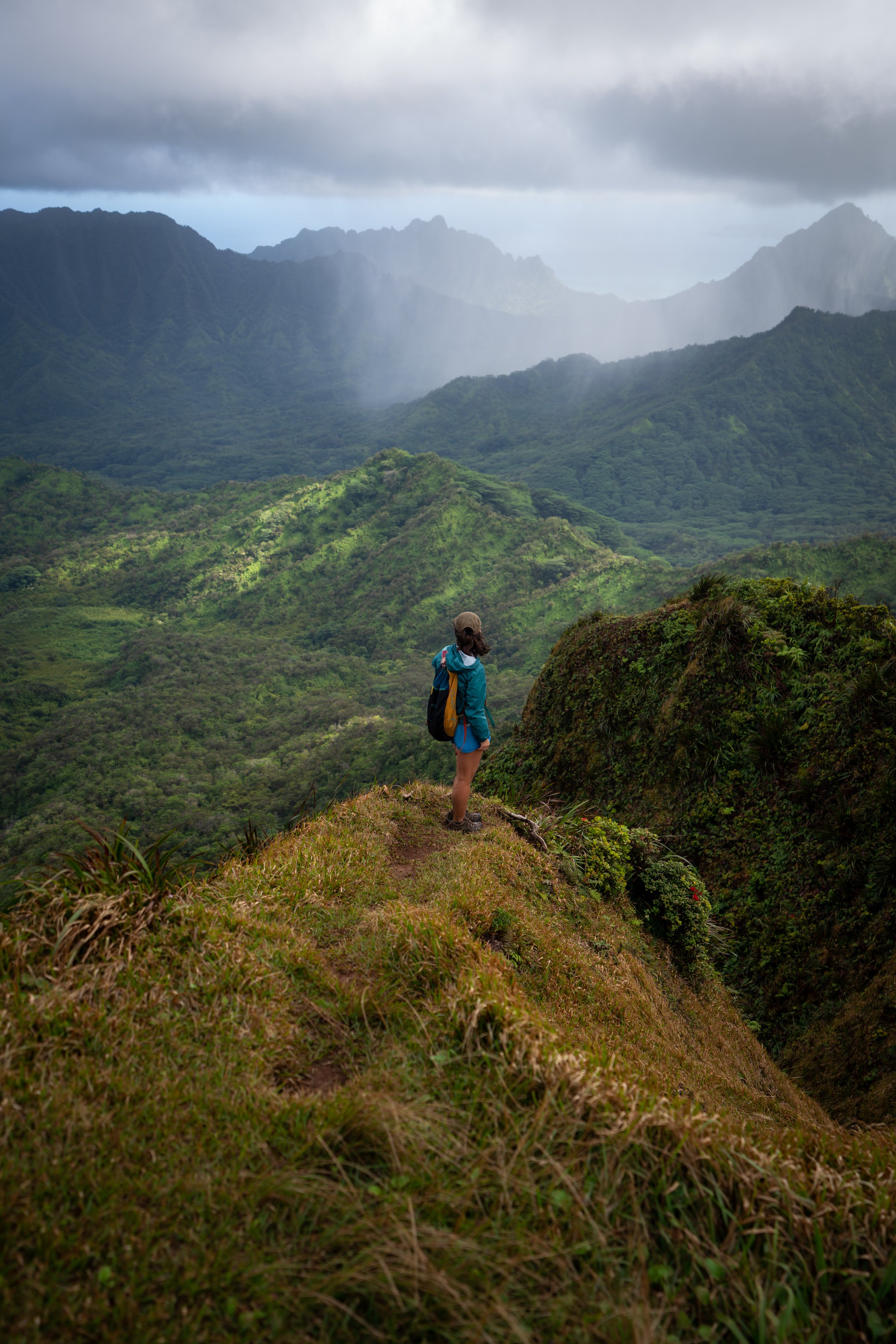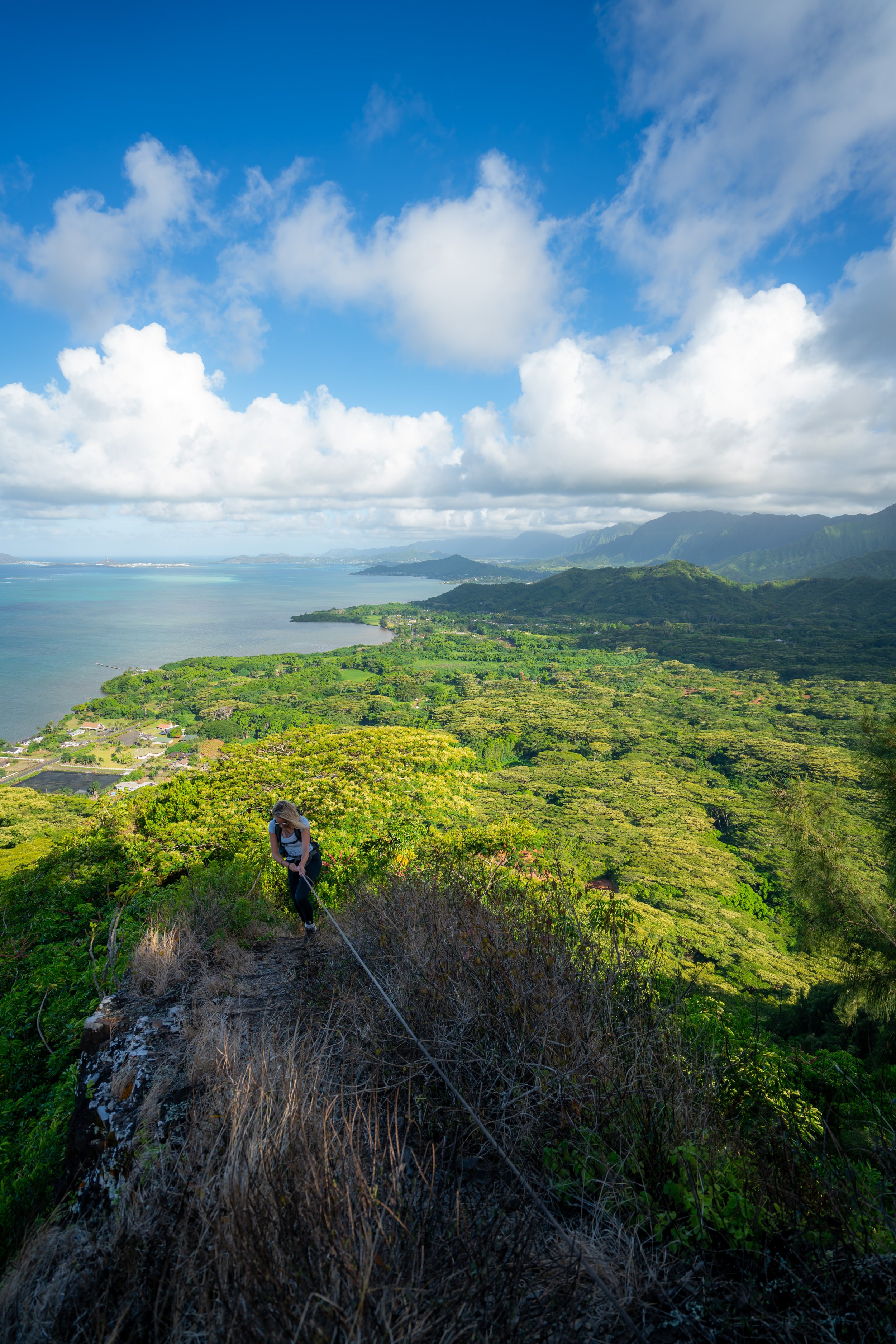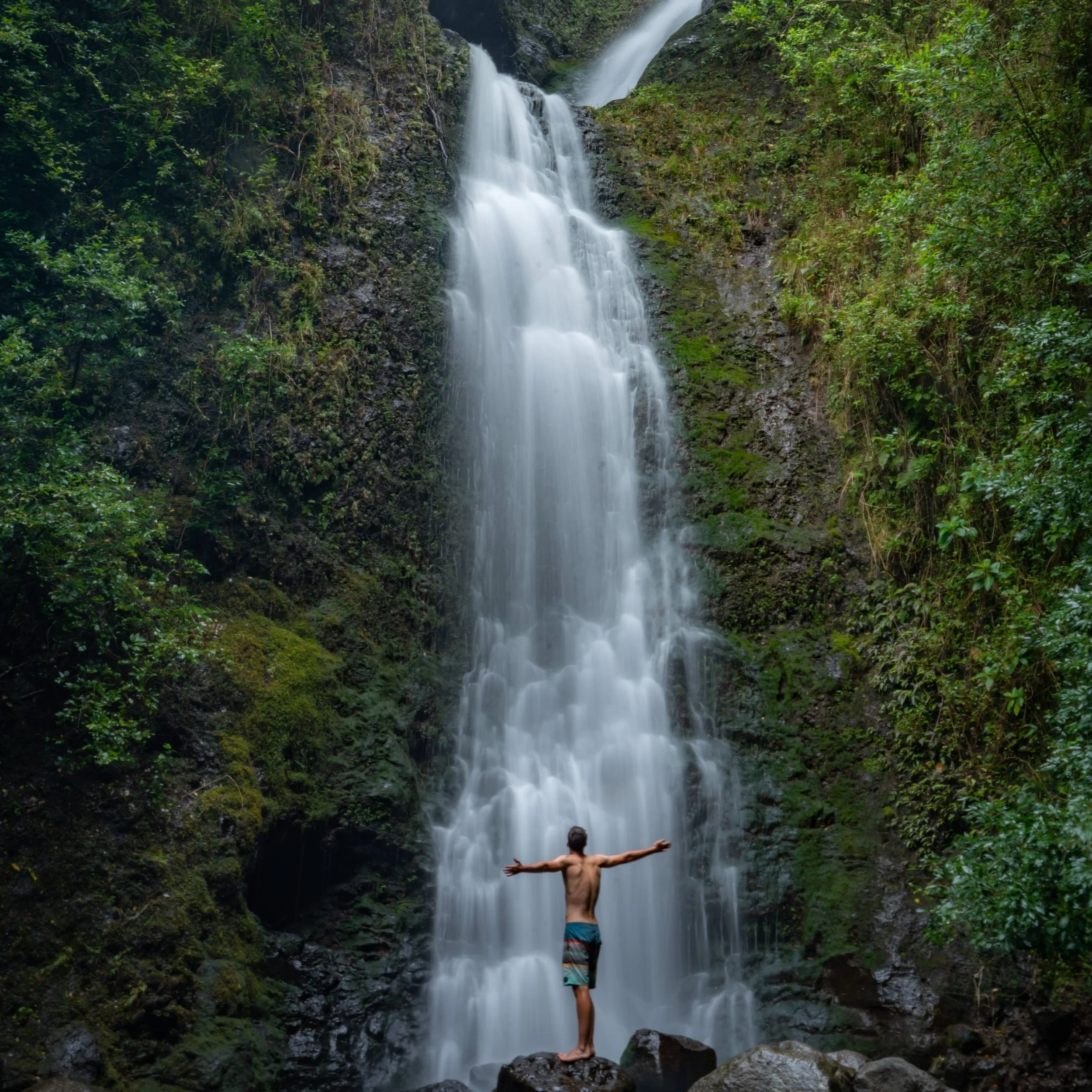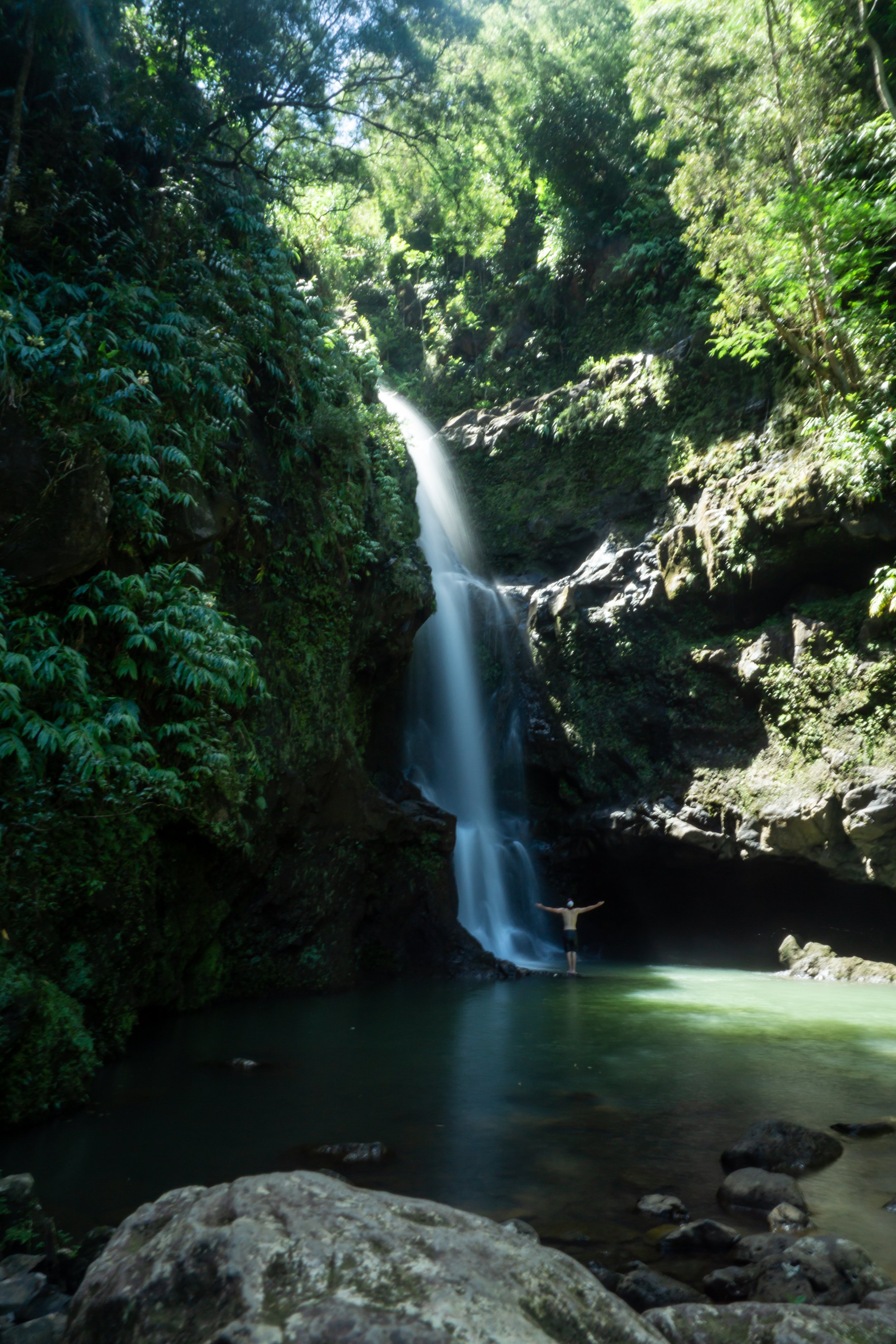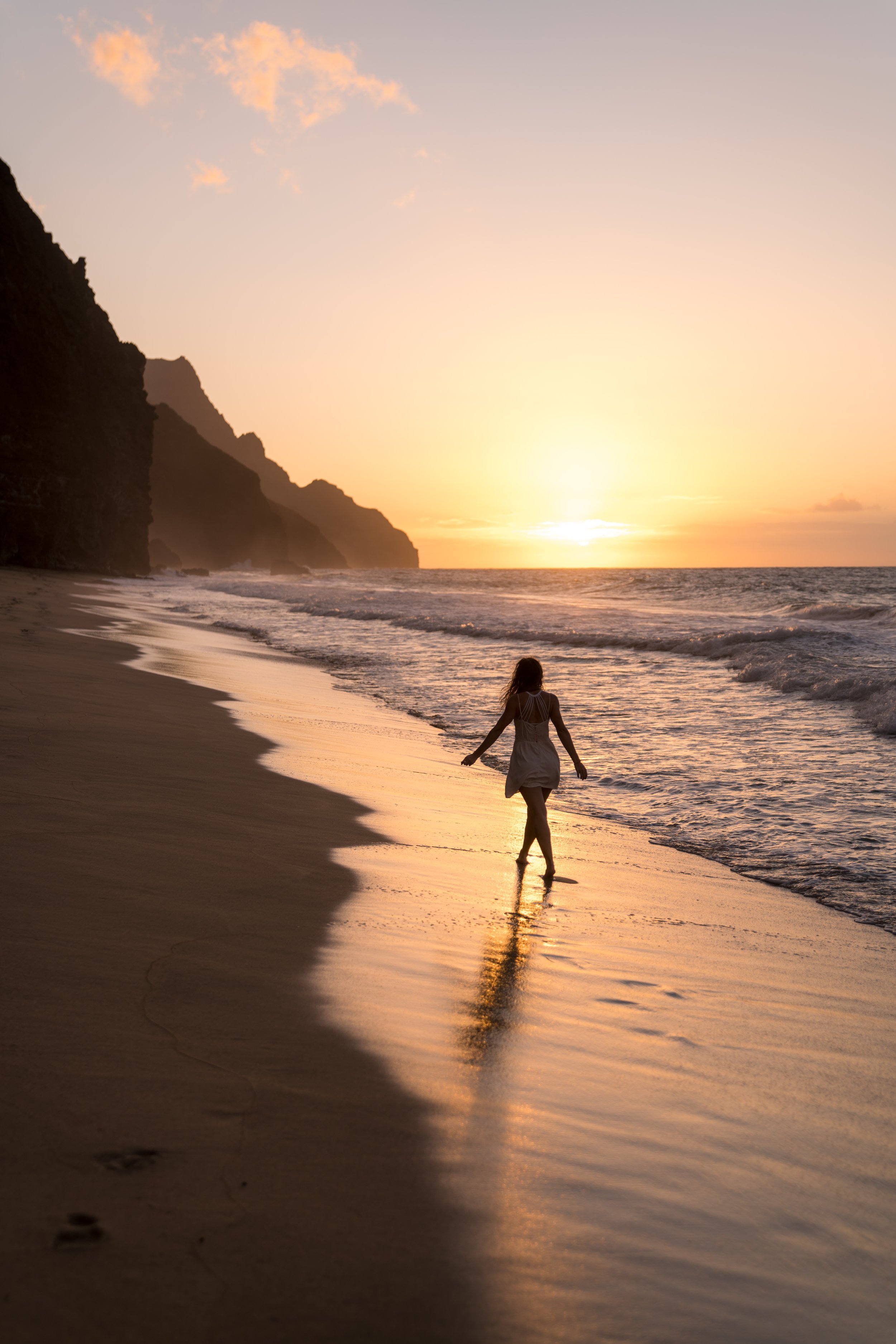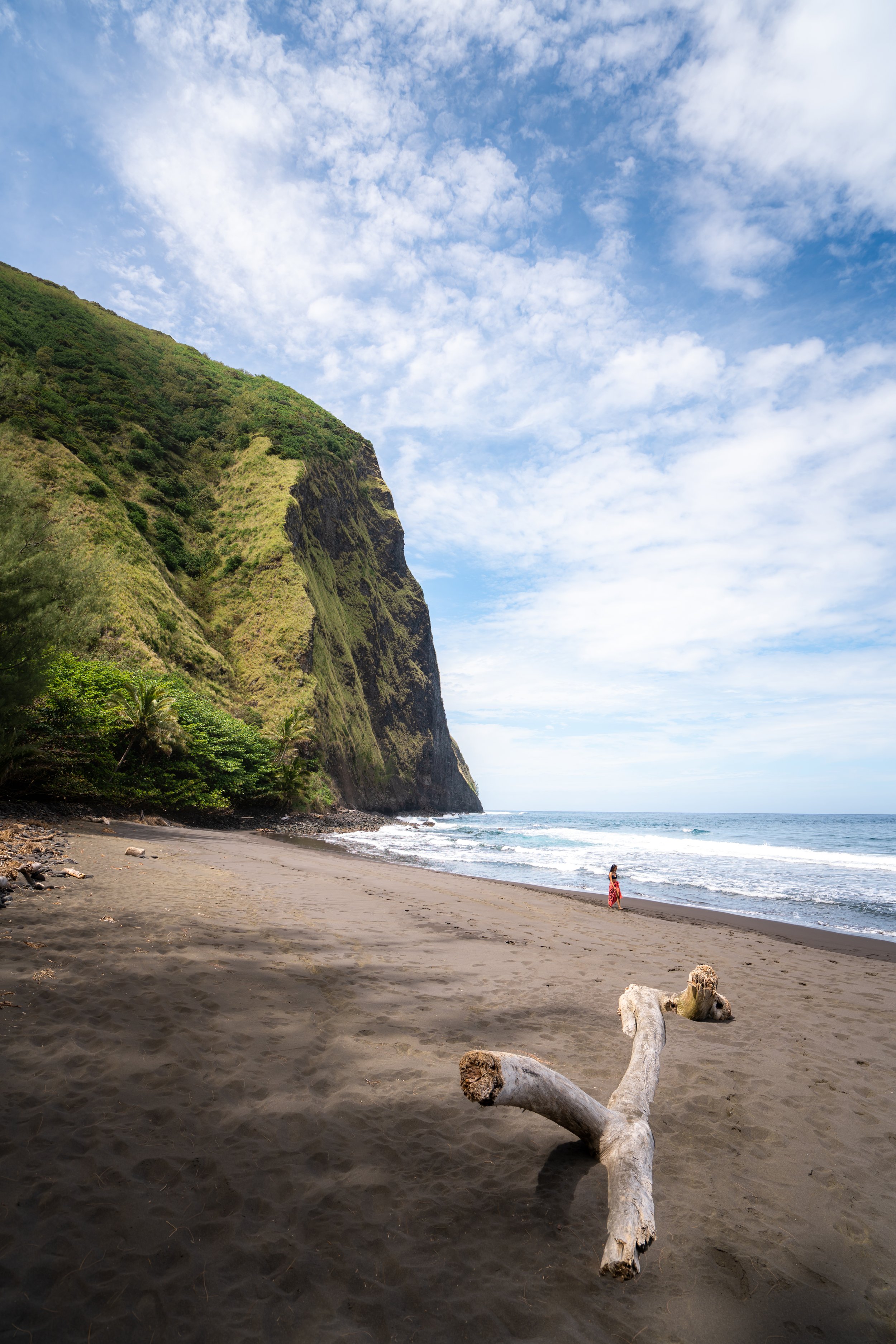Hiking the Mauʻumae Ridge Trail to Puʻu Lanipō on Oʻahu, Hawaiʻi
Distance to Puʻu Kainawaʻanui: 6.8 miles / 10.9 km
Distance to Puʻu Lanipō: 7.4 miles / 11.9 km
The Mauʻumae Ridge Trail to Puʻu Lanipō in the southern Koʻolau Mountains on Oʻahu is one of the longer, more adventurous day hikes south of the Pali, comparable to only Kūlepeamoa Ridge in terms of how long it takes to reach the Koʻolau Summit.
For this reason, Mauʻumae Ridge is often overlooked compared to some of the neighboring ridge hikes, like Wiliwilinui and Waʻahila Ridge, which largely has to do with Mauʻumae being a bit longer and inherently more difficult.
This is because there’s more elevation gain and loss over the course of the trail, and Mauʻumae Ridge gets more overgrown as the trail climbs higher, which is something that can’t always be said about other southern Koʻolau ridge trails.
Mauʻumae Ridge Trailhead Parking
Parking for the Mauʻumae Ridge Trail is located on Maunalani Circle at the very top of Wilhelmina Rise above Kaimukī.
The trailhead is located at the upper portion of the loop.
Google Maps Directions: Mauʻumae Ridge Trailhead
My Hawaiʻi Hiking Checklist
Osprey 3L Water Bladder - The Osprey 3L water bladder is the most universal hiking and backpacking water bladder on the market, and it’s my go-to because of the slide-off seal that allows it to be quickly filled from the top. Additionally, individual parts are easily replaceable, such as the bite valve.
Blister / Heel Protectors - I swear by these cheap, amazing heel protectors to prevent blisters for nearly every kind of hiking and backpacking that I do!
Black Diamond Headlamp - Personally, I recommend the Black Diamond Storm because it is one of the brightest, lightest, and longest-lasting headlamps on the market—and trust me, the weight-to-battery-life ratio really does matter!
Hiking / Trail Running Shoes - Depending on the type of trail, I prefer to use either the Keen Targhee for longer, more rugged hiking or the HOKA Zinal Trail-Running Shoe for lighter, less intense trails. In either case, both have been amazing to me for many years across countless environments, and both can be found in men’s and women’s sizes. - (Men’s Keen / Women’s Keen) (Men’s HOKA / Women’s HOKA)
Waterproof Rain Shell - You never know when it may rain, and I’ve learned over the years that a rain shell is far better than a rain jacket. By this, I mean that it’s best to have something that the water will roll right off of, which is why I recommend the Patagonia Torrentshell 3L available in both men’s and women’s sizes.
High SPF Sunscreen - Packing high-SPF sunscreen is a must for long days outside!
Hiking the Mauʻumae Ridge Trail
The Mauʻumae Ridge Trailhead begins between a couple of fences on Maunalani Circle, adjacent to 4967 Maunalani Circle.
In the beginning, Mauʻumae Ridge is very easy, as the trail descends about 300 ft. (91 m) over the course of the first 0.5 miles (0.8 km).
Personally, I find this very frustrating since you have to regain all that elevation—and more—after the descent.
This is the top of the steepest part of the descent, with Pālolo Valley paralleling Mauʻumae Ridge to the left.
This is where the Mauʻumae Ridge Trail reaches the bottom, beginning the long, slow ascent to the Koʻolau Summit.
The bench on the far side of the descent is always a nice mental checkpoint on the hike back down from the summit.
When the trail reaches this larger erosion scar, I find it easier to cut to the right through the trees, rather than going straight (left) up the exposed dirt.
On a typically clear, partly cloudy day, there is very little shade throughout much of the Mauʻumae Ridge Trail, which is especially true the higher the trail climbs.
This is why I highly recommend hiking in a hooded sun shirt, which can be useful here and on countless Hawaiʻi trails across the islands.
Know that Mauʻumae Ridge does not always look this well-maintained, but when I took these photos, the Uluhe had been cut back significantly, making the hike much easier!
As the Mauʻumae Ridge Trail moves higher, the overgrowth inevitably gets worse as the trail gets closer to Puʻu Kainawaʻanui.
For this reason, I highly recommend hiking Mauʻumae Ridge in pants, which is something that I do not often say about southern Koʻolau adventures. However, trails like the hike to Puʻu Lanipō, the Wailupe Loop, and even the Puʻu Kōnāhuanui Trail are all exceptions to this, with state-managed trails like Kuliʻouʻou and Hawaiʻi Loa Ridge being hikes for which I would never suggest this.
The pants below are my recommendations that hold up the best with the overgrowth here in Hawaiʻi, but with any hiking pants that need to be durable, make sure that they are at or near 100% nylon. This is really the most important factor!
On the upper elevations of Mauʻumae Ridge, the views of Kaʻau Crater to the north get better and better the higher the trail climbs!
Puʻu Kainawaʻanui
The first summit of Mauʻumae Ridge is not Puʻu Lanipō. Rather, this is Puʻu Kainawaʻanui, sometimes called false Lanipō, as the true Lanipō Summit is the peak just to the south (right) of Puʻu Kainawaʻanui on the Koʻolau Summit Trail (KST).
That being said, I did not continue further on the day I took these photos because the wind was tearing across the ridgeline. It was some of the worst wind conditions that I’ve seen on the summit, so I decided that it wasn’t worth hitting a peak that I’ve been to many times before.
If you are interested in hiking further along the Koʻolau Summit, note that the next notable summit to the north is Puʻu Palikea, more commonly known as Kaʻau Crater, and to the south, the next major trail is Wiliwilinui, with Puʻu Lanipō in between.
Read My Separate Post: Koʻolau Summit Trail (KST)
Native Plants on Mauʻumae Ridge
In the beginning of the trail, you can find native ʻŪlei growing all along the side of the trail.
After the dryer sections in the beginning, it doesn’t take long to reach a predominately native Uluhe, Koa, and ʻŌhiʻa forest that will continue for the rest of the hike.
The most significant native plant that stood out to me were a couple of ʻIliahi trees about 2.0 miles (3.2 km) into the trail. Typically speaking, ʻIliahi grows in much higher numbers on the ridges across central Oʻahu, but this was one of the few times I noticed it on a ridge in the southern Koʻolaus.
If you would like to learn more about these and many other native Hawaiian plants from across the islands, I encourage you to check out my separate post linked below.
Read My Separate Post: Native Hawaiian Plant Guide
More Oʻahu Adventures
If you’re interested in reading about some more amazing Oʻahu adventures, check out my separate posts below!
Best Hotels & Restaurants in Waikīkī
If you’re trying to decided where to stay on Oʻahu, check out my top 10 list for the best resorts and restaurants in Waikīkī.
I break down what makes one hotel a better choice over another, so that you can find the best fit for your stay on the island.
Read My Separate Post: Best Waikīkī Hotels & Restaurants
HNL Airport-Hotel Shuttle
Prices on ride-share apps like Uber/ Lyft cannot beat the price of booking your hotel shuttle prior to arrival. I say this because there are additional fees for ride-share airport pick-ups at Honolulu Airport (HNL), which is why I recommend booking your transportation in advance using the options below.
Additionally, the last option below will go as far as the Ko ʻOlina Resorts on the West Side and Turtle Bay on Oʻahu’s North Shore!
Best Way to Book Rental Cars!
I travel quite a bit, and I know firsthand that finding a good rental car deal can be a challenge, but that’s why I recommend comparing all of your options with Discover Cars.
In short, Discover Cars is a well-known, reputable business that allows you to search for the best deal across companies, and they have the best full-refund cancellation policy I’ve ever seen, valid up to 72, or sometimes even 48, hours prior to your reservation!
Book Here: Discover Cars
Visiting Other Islands
If you are visiting Oʻahu or heading to another island, check out some of my personal recommendations for Oʻahu, Maui, Kauaʻi, Molokai, Lānaʻi, and Hawaiʻi Island (Big Island) in these separate posts.
If you’re trying to decide which island is right for your visit, check out my overview about each island in the post below.
Read My Separate Post: What is the Best Hawaiian Island to Visit?
What is the Best Time of Year to Visit Hawaiʻi?
The weather in Hawaiʻi can often appear to be warm and beautiful throughout the year, but in my experience, there is a lot more to consider when planning what time of year to visit the islands, such as what island you are considering, what sides of each island do you plan to stay, what activities are you most interested in, the wildlife, and countless other nuanced variables that can all impact the type of trip you can expect to have.
For these reasons, I highly recommend reading through my separate article to not only understand my thoughts regarding the best time of year to come to Hawaiʻi but also what you need to consider based on the time of year that you plan to visit.
Read My Separate Post: What is the Best Time of Year to Visit Hawaiʻi?
10 Best Tours & Excursions on Oʻahu
There are a lot of different tour options to choose from on Oʻahu, but to make it easier to decide, I made a list of my favorite tours because some things simply are better with a local guide!
Read My Separate Post: Best Tours on Oʻahu
Safety
All hikes in Hawaiʻi should not be compared to trails outside of the islands, and hikers should exercise due caution on every adventure, given that many are extremely dangerous.
By this, I mean that Hawaiʻi is known for hot, humid weather, steep, dramatic, and unstable cliffs, and flash floods, which can occur without warning. Therefore, it is important that you check the local forecast, understand the physical condition of your entire group, and pack sufficient food and water before attempting any adventure.
Disclaimer
All information provided on this blog is for informational purposes only and is not intended to be a substitute for information or advice from qualified professionals or managing agencies.
Noah Lang Photography LLC makes no representations or warranties regarding the accuracy or completeness of the information provided here, and readers should use their own discretion, judgement, and seek professional advice where it is appropriate.
Furthermore, Noah Lang Photography LLC shall not be held responsible for any injuries, lost individuals, or legal issues arising from the use of information provided on this website, and if applicable, the above safety disclaimer should be referenced to provide a generic overview of the risks involved.
All said, the content on this blog is for the sole use of Noah Lang Photography LLC, and unauthorized use or reproduction of this content is strictly prohibited.
Disclosure
This post is not sponsored.
However, some of the links in this post are affiliate links, which means that I may earn a small commission if a purchase is made through one of those links. This commission comes at no additional cost to you, and I only recommend products that I personally use and believe will add value to my readers. Thank you for your support, which enables me to continue creating more!
To read the full privacy policy, click here.

About This Blog
Noah Lang Photography, also known as @noahawaii, is 100% reader-supported!
I do not accept guest articles or sponsored content of any kind on my blog, which is why, if you enjoy the outdoor and travel content I create, please consider buying me a coffee!
I appreciate your support, which helps me continue to keep this blog alive!











